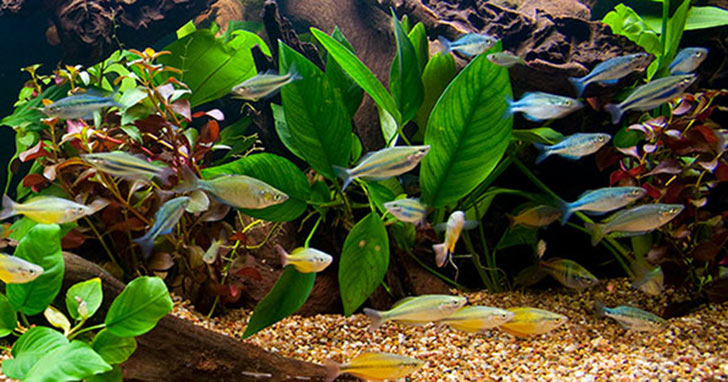
Poor water quality is every aquarist's worst nightmare. After all, unfavorable water conditions stress - and potentially kill - aquarium inhabitants. Excess nutrients, high ammonia levels, and low dissolved oxygen content are common examples of potentially dangerous aquarium conditions. Learn how to identify and remedy these conditions to maintain a healthy aquatic environment.
KEEP NUTRIENT LEVELS IN CHECK
Organic waste materials and uneaten food are the most common sources of organic nutrients. As these materials break down, they release such nutrients as nitrogenous products and phosphate in a form readily used by a variety of organisms. These excess nutrients feed undesirable tankmates, such as algae, parasites, and fungus, and can compromise the health of the entire aquarium system. Discoloration, foul smell, increased algae growth, and decreased pH levels are a few indicators of excess nutrient levels.
RECOMMENDED SOLUTION: Regular aquarium maintenance, replacing filter media, and routine water changes are some of the easiest ways to keep nutrient levels in check. The use of chemical filter media like phosphate-removing media is another convenient way to reduce specific nutrients.
BE AWARE OF AMMONIA
Most hobbyists fear high ammonia levels, and rightly so. Ammonia, even in small quantities, can harm aquatic life. It is extremely toxic and fish will show signs of stress, such as erratic swimming behavior, when ammonia is present. Ammonia is introduced through fish waste, respiration, and other biological processes. Accumulated fish waste, uneaten food, and overstocking often trigger ammonia spikes even in established aquariums.
RECOMMENDED SOLUTION: Ammonia levels should be undetectable. The presence of ammonia is an indication of inefficient biological filtration. In addition to regular maintenance and routine water changes, fortify and maintain efficient biological filtration with biological additives.
OPTIMIZE OXYGEN LEVELS
Most aquarists seldom think about their system's oxygen level. But most types of aquatic life cannot survive without oxygen. Unfortunately, water holds less dissolved oxygen when nutrient or pollutant levels are high, filtration is compromised, or aeration is reduced. As a result, fish need to compete with each other, beneficial aerobic bacteria, and plants to breathe.
RECOMMENDED SOLUTION: Use an oxygen test kit to accurately determine how much oxygen is present in your aquarium. If oxygen content is low, use an air pump to provide a steady supply of oxygen. Even if the test results are fine, invest in an air pump for peace of mind knowing you have a healthy, oxygen-rich aquarium environment.
DETERMINE IDEAL WATER PARAMETERS
Poor water quality, in the most general term, is a deviation from ideal water parameters. Therefore, it is essential for you to know the recommended water parameters for your specific aquarium setup. Without a point of reference, it is difficult to accurately determine aquarium water quality. Regular testing provides valuable information regarding water quality and also allows you to respond to water quality issues before they develop into more serious conditions.
|
Question:
We have small worms swimming in our 20 gallon freshwater aquarium. What could they be? |
Answer:
It's very likely you have planaria swimming in your aquarium. The best - and safest - way to rid your system of them is to keep up with aquarium maintenance. |
WE RECOMMEND
|